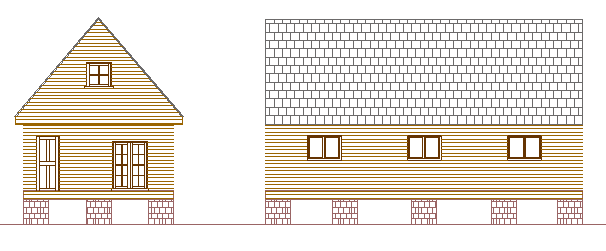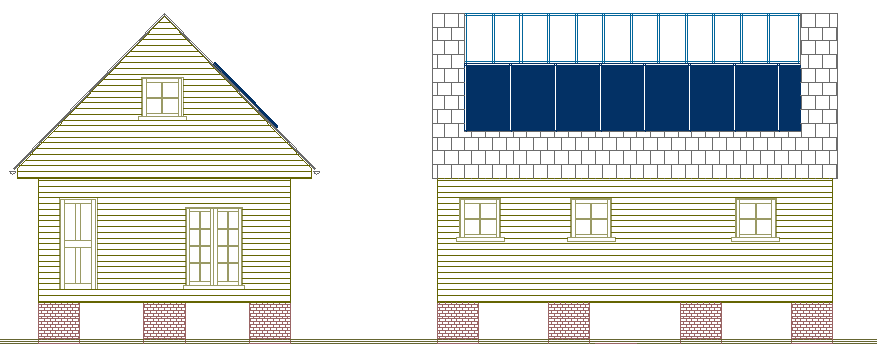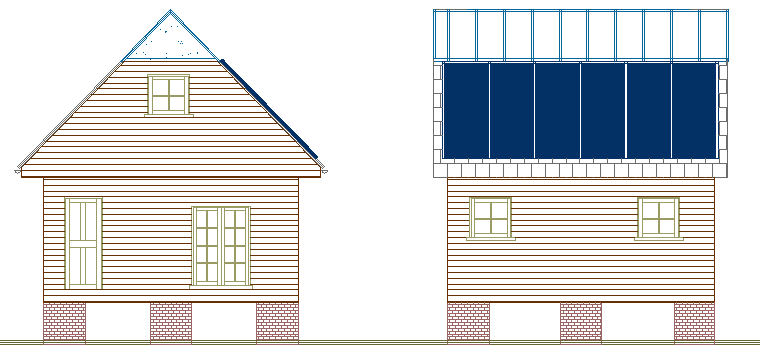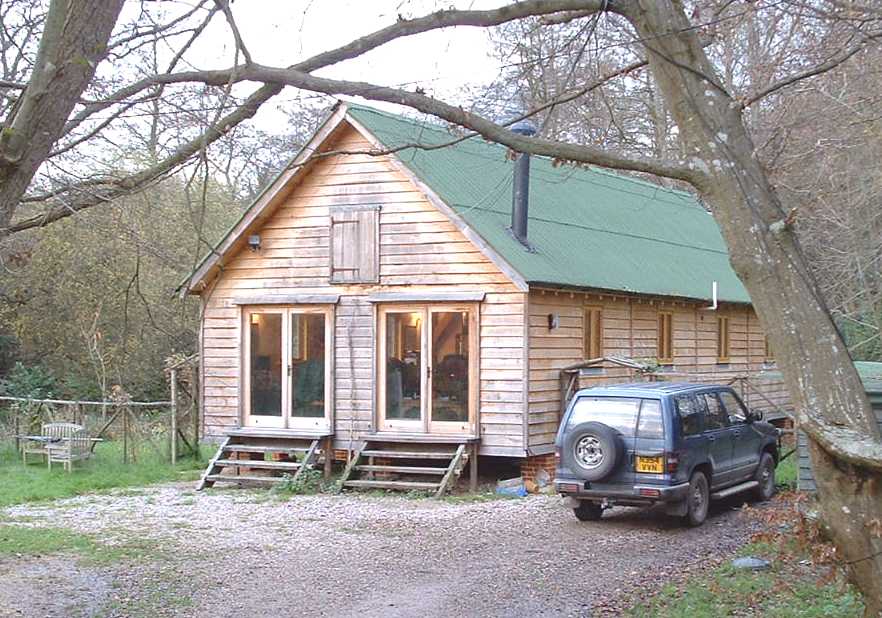|
|
|||||||||||||||||||||||||||||||||||||||
|
HOME | BIOLOGY | FILMS | GEOGRAPHY | HISTORY | INDEX | INVESTORS | MUSIC | NEWS | SOLAR BOATS | SPORT |
|||||||||||||||||||||||||||||||||||||||
|
AFFORDABLE HOUSING
In the United Kingdom, as with other countries, the cost of establishing a home is moving further away from first time buyers and others on a low income. There is also a shortage of housing, low cost or otherwise, where town and country planners (mostly district councils) have for the past 3 decades failed to make provision for the growing population, sustainably or otherwise.
Is there an alternative to struggling for 20 years to own a home of your own - in the process paying a mortgage several times the value of the house itself, in interest payments alone?
Well, maybe there is. What if we were to tell you that Utopia Tristar™ are currently designing homes for around fitted, starting @ £50,000 for a single bedroom unit. These prototype houses come in different sizes for up to 4 good sized bedrooms, fitted kitchen, a bathroom, and ample living space ready for you and your family to move in. (See below for a definition of AFFORDABLE.)
LIVING COST COMPARISON FOR BRICK, E-PAX and RE-PAX HOUSES
THE E and RE-PAX modular system comes together to provide comfortable ecologically sound housing at affordable prices. They are built to last using treated timbers in structural areas.
RE-PAX DIY INSTALLATION - With a friendly carpenter, or a good DIY background, these homes may be installed (minus wiring and plumbing in about a week. No ground works are necessary, except for permanent installations for sanitation.
OTHER ADVANTAGES
Utopia Tristar™are keen to conserve energy by incorporating 3 layers of insulation in their unit construction designs. Having reduced the heating cost, they've gone one better, to capture heat from the sun in a unique way to be able to heat their homes all year round with significant savings (not shown below).
In addition, a Utopia Tristar™e-pack comes with solar panels and a wind generator as standard. This will provide much of your daily electricity. You may even be able to sell any excess electricity to the national grid under current legislation. Though, the sell-back was recently reduced from .38p per kilowatt to .21p by the Greg Barker MP, this is under review - after a legal challenge by Friends of the Earth.
PLANNING CONSULTANCY SERVICE
If you are a landowner and might be interested in incorporating such technology in other other, bespoke designs, Utopia Tristar™would be pleased to advise you on the possibilities.
CONTACTS: Utopia Tristar 21st Century Caves
.Utopia Tristar E-pack timber mobile home 48'x18' for larger families.
The
above is an
example of sustainable living, our E-pack (energy flatpack) - Contact us if you are thinking
of settling down to
a comfortable, affordable,
lifestyle. You'll need the planning lowdown
from us. We
can supply similar homes 48'x18'
to that above and
other sizes as an affordable flat-pack, (POA
due to the volatile timber market). Our planning strategist secured consent
for this size mobile home, even where the council concerned were adamant
that
this attractive, affordable unit did not comply with regulations. They
do.
.Utopia
Tristar ER-pack timber mobile home 28'x18' for couples &
small families. Our homes have a 278mm air-gap between walls, triple insulated with quilts and honeycomb. The base units start from a very affordable £25,000, and you don't need to apply for planning permission if you already have a caravan on site. It's zero carbon living at sensible prices.
.Utopia Tristar ER-pack timber mobile home 20'x18' for singles and retirees with occasional guests.
GUIDE (starter) PRICES RE-PAX £ *
* Based on a 2 acre site shared by 10 cooperating self builders , shared septic tank and well.
CONTACTS:
Utopia Tristar™ Partners (affordable sustainable living) Solar House, BN27 1RF
Telephone: 01323 831827 & 07842 607865
SUSTAINABILITY and WOOD
Timber has been used by man for an enormous variety of purposes since pre-historic times, particularly in the construction of shelter and for artefacts used in day-to-day life. Forests cover 30% of the earths surface. Trees have been called "fountains of the earth" (Durrell 1993).
Today, timber and wood-based products continue to be used in construction, often in conjunction with other, man-made materials (metals, concrete, plastics). Wood is truly renewable in a relatively short time frame and can also be recycled through a succession of uses before returning to its constituent elements of carbon, water and energy.
Wood plays a major role in combating climate change. Greater use of wood products will stimulate the expansion of Europe's forests and reduce greenhouse gas emissions by substituting for fossil fuel intensive products."
•
Wood products act as a carbon sink throughout their life
•
Wood is created by photosynthesis and can be considered an efficient way
of storing solar energy
OTHER CONSIDERATIONS
Shorter
construction time: While
most homes that are built with brick and concrete can take up to and
sometime exceed one year to complete, one of our homes built in 1/6 of
the time. This time savings should result in a real cost benefits to you
the end user. Energy
efficient: The Utopia
Tristar™ system is superior to traditional brick and concrete housing in that it
provides for greater insulating capabilities in the walls and floors to
keep the house warmer in the winter and cooler in the summer.
Consequently the cost of heating and cooling your home will
significantly reduce. If you live in a brick and concrete house, you
should already know that your home holds or retains the temperature of
the season. It takes longer to heat the brick and concrete mass in the
winter and it takes longer to release the heat in the summer. Moisture
is also retained in a brick and concrete house resulting in the paint
and plaster flaking of the walls and ceiling. A wood house
"breathes", allowing excess moisture to escape naturally. Earthquake resistant: While no structure built by man can withstand the forces of nature, one of our mobile homes are more earthquake resistant, with far less property damage compared to traditional brick and concrete houses, since timber buildings can absorb movement that would topple a brick building and spring back, virtually unaffected, in all but the worst cases. Due to the frequency of earthquakes, timber framed houses are very popular in Japan and other countries of the Pacific Rim. As a result of the deadly earthquakes that the country of Turkey experienced in 1999 the government has embraced timber houses and is actively pursuing alternative housing construction to replace their traditional construction methods.
A DEFINITION OF AFFORDABLE HOUSING
Affordable housing is a dwelling where the total housing costs are affordable to those living in that housing unit. In the United States, a commonly accepted guideline for housing affordability is a housing cost that does not exceed 30% of a household's gross income. Housing costs considered in this guideline generally include taxes and insurance for owners, and sometimes include utility costs. When the monthly carrying costs of a home exceeds 30-35% of household income, then the housing is considered unaffordable for that household.
Where the demand for available housing exceeds supply, a large amount of the housing stock is not affordable to much of the population. Demand can be measured in terms of the costs for housing, housing type (such as apartments vs. single-family homes, or the size and configuration of units, including number of bedrooms) and location for housing (relative to commercial/employment centers, transportation infrastructure, schools and other community resources.) Such areas commonly experience income growth for middle and working class households at rates lower than the rates at which property values rise. These same areas also tend to have a limited supply of land on which new housing can be built, or an array of statutes that make it difficult or costly to generate expanded supply. The most "affordable" places in the U.S. are where there is the least demand and an adequate supply. Comprehensive data for the most affordable and least affordable places in the U.S. is published each year by an affordable housing non-profit organization, the National Low Income Housing Coalition.
Consequences of affordable housing shortages
A common measure of community-wide affordability is the number of homes that a household with a certain percentage of median income can afford. For example, a community might track the percentage of its housing that is affordable to households earning 60% of median income. In addition to the distress it causes families who cannot easily find a place to live, lack of affordable housing is considered by many urban planners to have negative effects on a community's overall health. For example, lack of affordable housing can make low-cost labor more scarce, and increase demands on transportation systems (as workers travel longer distances between jobs and affordable housing). An increasing number of studies and articles focused on US cities (Los Angeles, CA, Sarasota, FL) link the parallel trends of housing cost increases and declines in enrollment at local schools.
Policy tools to address affordable housing
Numerous policies in the U.S. and abroad have been designed to address the problem of inadequate supplies of affordable housing. Sophisticated secondary market mechanisms, inclusionary zoning, and land banking are three prominent tools, as well as tax and fiscal policies that result in reducing the cost of mortgages and the cost of borrowing. Other more recently promoted policy tools include relaxation of prohibitions against accessory dwelling units, and reduction of the amount of parking that must be built for a new structure.
Affordable housing is a controversial reality of contemporary life, for gains in affordability often result from expanding land available for housing or increasing the density of housing units in a given area. Ensuring a steady supply of affordable housing means ensuring that communities weigh real and perceived livability impacts against the sheer necessity of affordability. The process of weighing the impacts of locating affordable housing is quite contentious, and is laden with race and class implications.
Housing Subsidies
The federal government in the U.S. provides subsidies to make housing more affordable. Financial assistance is provided for homeowners through the mortgage interest tax deduction and for lower income households through housing subsidy programs. In the 1970s the federal government spent somewhat equal amounts on tax expenditures for homeowners and low income housing subsidies, however by 2005 tax expenditures had risen to $120 billion per year, representing nearly 80 percent of all federal housing assistance. The Advisory Panel on Federal Tax Reform for President Bush proposed reducing the mortgage interest tax deduction in a final report issued on November 1, 2005.
Housing assistance for lower income households can be divided into three parts:
“Project based” subsidies are also known by their section of the U.S. Housing Act, and include Section 236, Section 221(d)(3), Section 202 for elderly households and Section 811 for people with disabilities. There are also housing subsidies through the Section 8 program that are project based. The United States Department of Housing and Urban Development (HUD) administers these programs, and has further information on the particular programs on agency web site. HUD programs have ceased producing large numbers of units since the 1980s. Since 1986, the Low-Income Housing Tax Credit program has produced a large share of the affordable units, however the affordability level in these units is less than the former HUD programs.
An overview of the housing challenges facing America was conducted by the Millennial Housing Commission in 2000, under the leadership of Conrad Egan.
LINKS:
A
timber mobile home of the 48x18 design - we'd
like to see affordable quality housing for everyone
|
|||||||||||||||||||||||||||||||||||||||
|
This webpage is Copyright © 2013 Utopia Tristar Partners, 21st Century Caves, tradenames.
|
|||||||||||||||||||||||||||||||||||||||
|
AUTOMOTIVE | BLUEBIRD | ELECTRIC CARS | ELECTRIC CYCLES | SOLAR CARS |
|||||||||||||||||||||||||||||||||||||||




